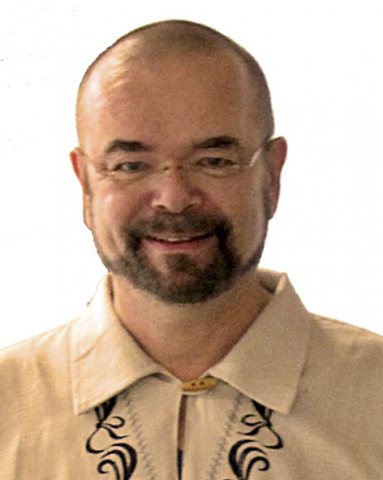
Archive Copy.
Prof. Marc Helgesen is author of more than 150 professional articles, books and textbooks including the English Firsthand series (Pearson Education/Longman Asia) and has lead teacher development workshop on five continents. He is professor at Miyagi Gakuin Women's University, Sendai. He also teaches "Innervoice & Task Planning" at Teachers College Columbia University, MA TESOL Program, Tokyo and "Positive Psychology (The 'Science of Happiness') in ELT" at Nagoya University of Foreign Studies, Nagoya. Marc is chair of the Extensive Reading Foundation (www.erfoundation.org) and maintains several websites including www.ELTandHappiness.com and www.HelgesenHandouts.weebly.com.
Plenary Session
Language Learning and the Senses
Teaching English means more than knowing about English and ELT. It includes knowing how we teach and knowing who we are – in relation to the way our students learn. That includes sensory awareness. Barring a disability, we all have the five senses. Every bit of information we take in comes through sight, hearing, touch/movement, smell, or taste. Why then are classes often limited to visual (Look at page 35.) and auditory input (Listen!)?
We have sensory preferences (de Jong et al., 2009). That doesn't mean, of course, that we should try to teach each student only through their main sense. That isn't practical or even desirable. Rather, we need to teach all students through many different senses. Students who get multi-sensory input learn more. In controlled experiments, learners who experience multi-sensory come up with 50-75% more creative solutions in problem solving tasks (Mayer, 1997). Even something as simple as presenting information visually doubles recall compared to oral presentation. Think about that next time you "give a lecture." Multi-modality presentation doubles that result again (Najjar, 1998, in Medina, 2008)
This activity-based session will explore sensory modalities. This includes some surprises. Of course, some information lends itself to one sense over the others. But often senses overlap. And all things are not equal – most of the time, "visual" trumps everything else (so why are/do we spend so much time standing at the front of the room talking?).
Participants will experience a range of activities and will receive a handout showing how to modify classroom activities for listening, speaking and reading to include a wider range of sensory input. It really does make sense!
See a preview of this plenary at http://koreatesol.org/content/helgesen-nc2014-plenary-preview-video
Second Presentation
Making Your Coursebook More Brain-Friendly
The presenter will discuss seven ways to modify coursebooks to promote more effective learning and will explain how each of these modifications is grounded in neuroscience and show ways that teachers utilize them in lessons from the coursebooks they are already using:
- Adding Emotion (Willis, in Sousa 2010) – a policy publishers usually avoid.
- Giving Choice – but too much leads to cognitive overload (Rock, 2009: Schwartz, 2004).
- Throwing in Novelty (Medina, 2008) – a challenge for materials writers since publishers often prefer consistency.
- Teaching across the Senses (Sousa, 1011).
- Managing Challenge, which encourages flow (Sousa, 1011; Csikszentmihalyi, 1997).
- Supporting Creativity (Robinson, 2006; Caine, et al., 2009).
- Offering Personalization (Willis, 2006).
After discussing these modifications, connecting them to findings in neuroscience, and bashing a few myths about the brain, we will encourage participants to think of ways they could modify their own favorite textbooks and lessons to fit the mind/brain/education revolution. A handout will offer 20 ways to do so (including the seven above) and provide a list of references.


